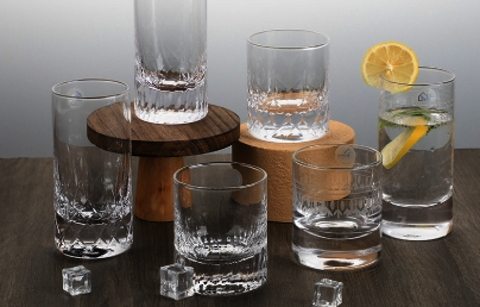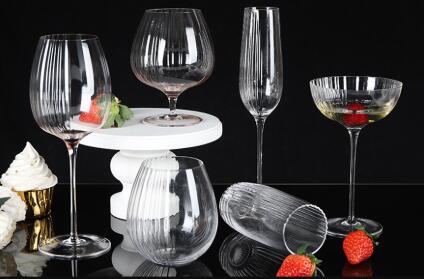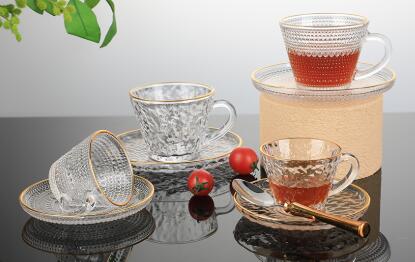What are the post-processing of glasses?
Pulished on Jan. 12, 2019
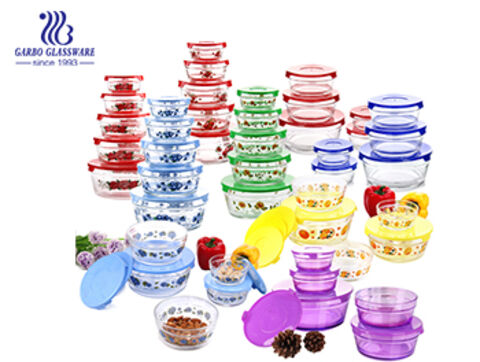
Formed glassware must be annealed to eliminate the thermal stress caused by uneven cooling. Common pressing products and kiln glass products with simple shapes can no longer be processed. Most glassware is processed after forming to complete the shape of the products, which has an artistic effect. The main processing methods are as follows:
Removal of hats: Blown products with hats after forming, generally using scratches and local quench or heat to crack along the edge (called blasting or blasting), the cracked edge is then smoothed by grinding and burning (called grinding and drying). Some remove the cap by fusing the flame along the edge of the mouth but often leave a sensible fuse on the edge of the mouth.
Tempering treatment: Glass products are often brittle and fractured when the impact force exceeds the bearing strength. The products treated by hot tempering or chemical tempering are called tempered glass products. This kind of vessel has a prestressing force and high impact strength. Hot-tempering treatment is to heat the product evenly to near softening temperature and rapidly cool the surface of the product by air blowing or oil quenching, resulting in a huge temperature difference between surface cooling and central heating. There is no stress caused by temperature difference when the center of the product is above the strain temperature. When the product surface is cooled to room temperature, the center also enters a rigid state. Continuous cooling will produce the stress caused by the shrinkage effect. The temperature difference between the back surface and the center disappears, and the surface compressive stress and the center tension stress will exist permanently. Chemical toughening treatment is to place the product in hot potassium molten salt. Potassium ions with large ionic radius react with sodium ions with a small ionic radius on the surface of the glass. Potassium ions replace sodium ions vacancies, resulting in extrusion of the surface glass structure of the product, resulting in compressive stress. The surface compressive stress and the impact strength of toughened glass products are significantly increased. Two kinds of glass composite products with different surface and center components cause compressive stress on the surface of glass products due to different shrinkage after cooling. This kind of high strength glassware is called sandwich glass products.

Cutting and engraving: Grinding glass with corundum grinding wheels at high speed on the surface of products to produce a variety of artistic effects. Traditional carving processing has shallow engraving (moving grass and flowers) and deep. It can deeply engrave cross furrows in different directions and form various geometric figures. It is suitable for lead crystalline glass and color coated glass. Grinding can also engrave vivid relief surface on the glass surface.
Polishing: The surface of glassware can be polished by mechanical polishing, fire polishing and chemical polishing (see glass manufacturing).
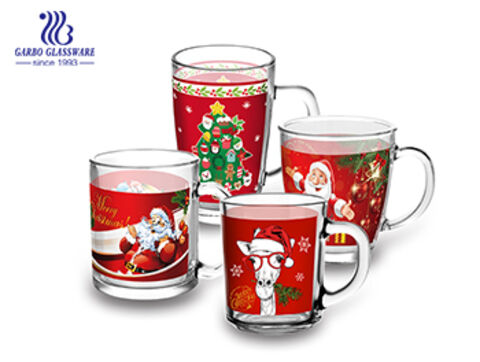
Glossy treatment of wool surface: Sandblasting, acid etching and glazing are commonly used. Sandblasting is simpler. It uses high-speed air to inject quartz sand or diamond sand to impact the glass surface. The parts without surface treatment are covered with rubber, aluminum or iron. The acid etching method is to soak in hydrofluorocarbon acid, hydroelectric acid, ammonium fluoride and other liquids or smear with paste. After a few minutes, the glass surface will corrode and lose light, and a very delicate matte glass surface will be obtained. The parts without surface treatment can be coated with paraffin and resin. Glazing method is simple and widely used. It mixes specially designed glazes with oils and coats them on glass surfaces requiring surface treatment. The glazes are heated to melt firmly. Glaze can be colorless or can be added with inorganic pigments and assume a variety of colors, respectively, to obtain glossy surface and decorative effect.
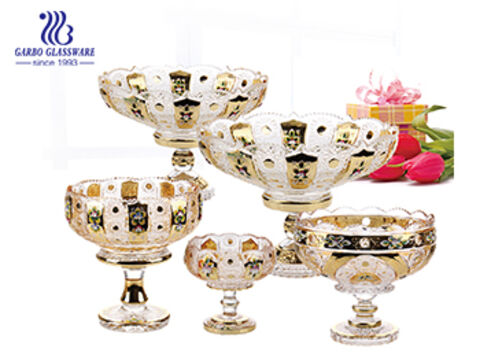
The decoration of colored glaze: Inorganic pigments and fusible glass are mixed into the slurry glaze with oil or glue. The glaze is covered by printing, drawing, spraying, spraying and decals, and then heated below the deformation temperature until the glaze melts and develops colour. In addition, there are glaze decoration method, used for the production of works of art. Glaze stacking is to mix glaze powder and clay or organic substances into glaze mud, and make various shapes of glaze surface by kneading tools. Firstly, the glaze is heated and sintered, then colored glaze or gold tracing is applied, and the glaze is reheated again so that the utensils show various colors. The whole process is completed by hand.
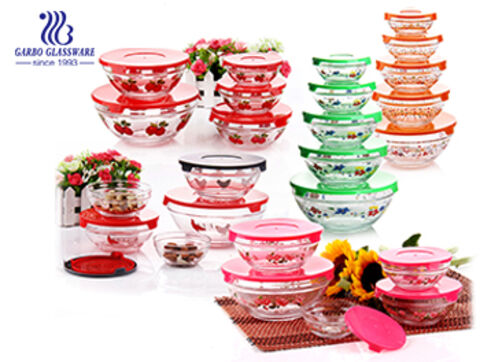
Rainbow Decoration: Plating a metal film on the surface of glass products. Because the refractive index of the film is different from that of the glass, the pearlescent rainbow color is produced.
Gold decoration: The organic compound solution of gold (also known as golden water) is depicted on the surface of glass products. When heated and fired, the organic matter is decomposed and the gold is reduced to a bright gold thin layer. If the glass surface is rough, it has a dull golden surface. Both have magnificent effects.
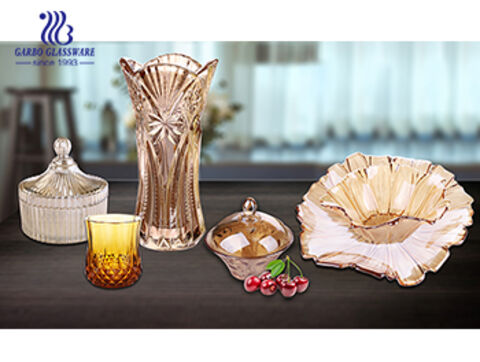
Ion Plating: silver, copper, gold and other compounds are pasted with high-temperature carriers, adhesives, etc. and coated on the surface of glass products. When heated below the glass deformation temperature, silver, copper and gold plasma diffuses into the glass and presents yellow, red and brown-red colors.
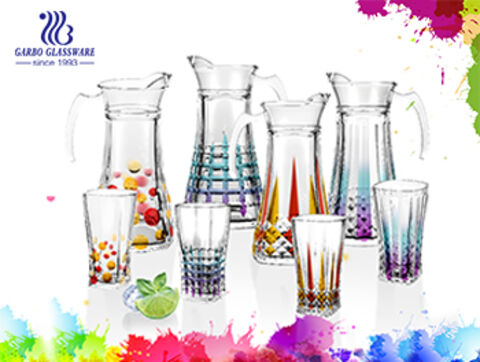
Spray colour: Spray green water-based paint evenly on glass glasses through a spray gun, and bake at low temperature. There will be different color crystal effect.
Decals printing: Decorative printing is a method of printing transferable pictures and texts
on paper or plastic film coated with film, which becomes decal paper or decal film, and then transfers them to the surface of various materials. Decoration paper can be divided into two categories: trademark decal paper and porcelain Decal paper. Trademark decal paper is printed with ordinary ink or gold ink, which is used to paste on the surface of wood or metal products. Porcelain decal paper is printed with ink prepared with special pigments. It is pasted on glass, porcelain and enamel utensils. Then it goes to the kiln. According to the requirements of different materials, it is calcined at 400-500, or even 800 degrees C, and the required color appears.







